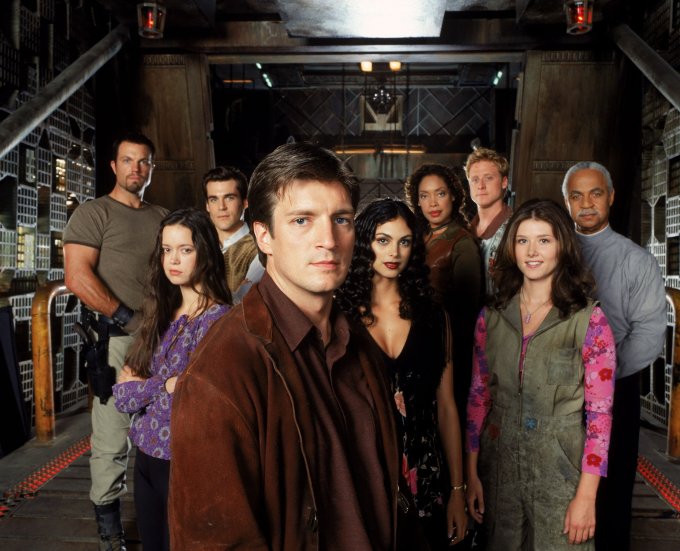A blog about how-to, internet, social-networks, windows, linux, blogging, tips and tricks.
01 December 2018
The 10 Best Christmas Movies on Netflix to Watch This Year

Watching Christmas movies on Netflix can be a great way to enjoy the holidays, especially if you want to immerse yourself in the season. And don’t worry about your connection, as there are many ways to improve your Netflix stream.
Whether or not you think Netflix is worth the money, Netflix is here to help you chill out and enjoy the holidays—no matter where you are in the world.
Netflix has a lot of content, and it can be difficult to sort the wheat from the chaff. To help you relax over the holidays, we’ve done the work for you and have selected several Christmas movies worth watching on Netflix.
1. How the Grinch Stole Christmas (2000)
How the Grinch Stole Christmas is a great movie for when you just want to sit back, relax with your family, and watch something that the kids can enjoy while staying within the Christmas spirit.
In this film, the Christmas-hating Grinch ruins the holiday for the inhabitants of Whoville, but when one thing leads to another, he learns that Christmas is about more than just shallow gifts and selfish consumerism. We all need such reminders every once in a while, don’t we?
Watch How the Grinch Stole Christmas on Netflix
Buy the How the Grinch Stole Christmas DVD or Blu-ray on Amazon
2. Bad Santa (2003)
Bad Santa is a crime comedy film that follows a has-been department store Santa Claus who uses his position to break into safes and steals all of the money made during the weeks leading up to Christmas.
This isn’t a movie for everyone, what with its black comedy and dark moments. But if you’re looking for a Christmas movie that isn’t like the rest, then Bad Santa may be right up your street. That it stars the late Bernie Mac is just icing on the cake.
Watch Bad Santa on Netflix
Buy the Bad Santa DVD or Blu-ray on Amazon
3. A Very Murray Christmas (2015)
A Very Murray Christmas features the one and only comedic genius that is Bill Murray, among a whole host of other Hollywood A-listers. The movie, pitched as a fake documentary, is hilarious and an “irreverent twist on holiday variety shows.”
The trailer should be all you need to know whether you’d like to check this one out for yourself. However, George Clooney is in it, so we’re guessing that’s half the population sold on it already.
Watch A Very Murray Christmas on Netflix
4. Love Actually (2003)
Love Actually is a Christmas classic that was once available on Netflix long ago, then taken off for some time, but now available again. If you haven’t seen it, you owe it to yourself to watch it at least once!
This ambitious film weaves together nine separate but connected stories, each exploring a different facet of Christmas love: parent and child, sibling and sibling, those who are single, those who are newlyweds, and more.
It’s packed with laughs and joy and feel-goodery, but that tenderness is balanced with bittersweet reality.
Watch Love Actually on Netflix
Buy the Love Actually DVD or Blu-ray on Amazon
5. White Christmas (1954)
Irving Berlin’s White Christmas movie is certainly a classic. The movie features Bing Crosby and Danny Kaye who start up a song-and-dance routine after the war and become wildly popular. The two then join a sister act, played by Rosemary Clooney and Vera Ellen, and head to Vermont to finally experience a White Christmas.
What makes this movie great, aside from the movie itself, are the nostalgic memories you may enjoy while watching it, as it has been regularly broadcast for many, many years during the holidays.
Watch White Christmas on Netflix
Buy the White Christmas DVD or Blu-ray on Amazon
6. Dear Santa (2011)
Dear Santa is a straight-to-TV romantic drama movie starring Amy Acker and David Haydn-Jones. Yes, it’s a Lifetime channel movie, but don’t let that turn you away: Dear Santa is above average for what it is, and perfect for the holidays.
The story follows a well-off woman in her mid-30s who lives off of her parents money. But when one day she happens to read a letter addressed to Santa and written by a seven-year-old girl who recently lost her mother, she begins down a path that changes her life.
Watch Dear Santa on Netflix
Buy the Dear Santa DVD on Amazon
7. Get Santa (2014)
Get Santa is a British movie with British humor. The movie was released in 2014 and features a top notch group of actors and actresses, including Jim Broadbent, Kit Connor, Warwick Davis, and Rafe Spall.
What makes this movie eminently watchable is that it can be enjoyed by kids as well as adults. It also features an interesting plot that will really get the kids in the family cheering for Santa. As if they weren’t doing so already.
Watch Get Santa on Netflix
Buy the Get Santa DVD or Blu-ray on Amazon
8. The Spirit of Christmas (2015)
Tired of the usual Christmas cliches? Then you’re in for a treat. While The Spirit of Christmas has its flaws, you’ll be able to overlook them for its unique spin on what a Christmas film can be.
Follow the hard-working lawyer, Kate, as she attempts to appraise and sell an old bed and breakfast before the year ends, only to find that it’s “haunted” by a cursed spirit. Figuring out how he died could be the key that unlocks the secrets of his curse.
Yes, there’s a romance subplot, but it’s mixed in with an interesting mystery—not of the thriller variety, just straight up drama.
Watch The Spirit of Christmas on Netflix
Buy the Spirit of Christmas DVD on Amazon
9. Holiday Engagement (2011)
Christmas is a time for family, but family meetups aren’t always something to look forward to—especially if your family tends to hound you about your life choices and singlehood.
In Holiday Engagement, Hillary hires an actor to pose as her fiance as she returns home for Thanksgiving and Christmas.
It’s an unoriginal premise we’ve all seen plenty of times before, sure, but the execution here is better than you’d expect. At the end of the day, it’s a fun little romantic comedy with some holiday cheer. Isn’t that all that matters?
Watch Holiday Engagement on Netflix
Buy the Holiday Engagement DVD on Amazon
10. A Christmas Prince (2017)
A Christmas Prince is the perfect movie to watch if you’re feeling down, want to shut off your brain, and sink into a sappy movie with a tub of ice cream by your side.
When a young journalist travels across the pond and goes undercover to report on a prince who’s turning king, she gets tangled up in more than she expected. It’s silly, it’s bright, it’s uplifting—all the right emotions for the most wonderful time of the year.
Watch A Christmas Prince on Netflix
What Christmas Movies Are You Watching?
If you’re looking for more great Christmas movies to watch on Netflix, see our article on how to find Netflix movies you’ll love. Want to watch these movies with someone who’s in another city or country? See our article on how to watch Netflix with friends who are far away.
Not keen on paying for Netflix? You may be able to find more Christmas movies to watch using one of these excellent free movie streaming websites.
Read the full article: The 10 Best Christmas Movies on Netflix to Watch This Year
Read Full Article
The battle over the driving experience is heating up and will be won in software
Sirius XM’s recent all-stock $3.5-billion purchase of the music-streaming service Pandora raised a lot of eyebrows. A big question was why Sirius paid so much. Is Pandora’s music library and customer base really worth that amount? The answer is that this was a strategic move by Sirius in a battle that is far bigger than radio. The real battle, which will become much more visible in the coming years, is over the driving experience.
People spend a lot of time commuting in their cars. That time is fixed and won’t likely change. However, what is changing is the way we drive. We’re already seeing many new cars with driver assist features, and automakers (and tech companies) are working hard to bring fully autonomous cars to the market as quickly as possible. New cars today already contain an average of 100 million lines of code that can be updated to increase driver assist options, and some automakers like Tessla already offer an “autonomous” mode on highways.
According to the Brookings Institute, one-quarter of all cars will be autonomous by 2040 and IHS predicts all cars will be autonomous after 2050. Those are conservative estimates, as we are likely to see major changes in the next 10 years.
These changes will impact the driving experience. As cars become more autonomous, we can do more than simply listen to music or podcasts. We may be able to watch videos, surf the web, and more. The value of car real estate is already valuable, but it’s going to skyrocket as we change the way people consume media while driving.

The Pandora acquisition was a strategic move by Sirius to gain the necessary assets so that it won’t fall behind in this space — and to get into the fast-growing music streaming business, where users consume music at home, work and at play. While Pandora’s music library is arguably second tier, it’s also good enough that it can provide pretty much every artist most people want. This is often how high-priced mergers happen – one party is concerned about falling behind and pays a premium to purchase the other company’s assets. It’s also a bet by Sirius about the driving experience of the future.
As the battle over the driving experience heats up, we will initially see companies like Google, Amazon and Apple start dipping their toes in the market. They might do that through investments in startups, rolling out their own services, or purchasing competitors. Some of those large tech companies already have projects around autonomous cars. Uber may even be interested in this market.
For now, Sirius probably doesn’t need to worry about competition from startups. They won’t be able to grow big enough fast enough to get a sizable share of the market. A more likely scenario is that startups will work on software that offers a unique functionality, making it an attractive acquisition target by a larger company.
This is going to be an interesting battle to watch in the coming years, as cars essentially become software with four wheels attached. Companies like Sirius know this is an important space and that the battle over the driving experience will be won in software. The acquisition of Pandora is only the beginning.
Read Full Article
Instagram Now Lets You Choose Your Close Friends

While the idea of having a best friend you do everything with is more associated with childhood, there’s no denying friends come in many forms. You may have close friends, friends you just occasionally hang out, work friends, and even friends with benefits.
Plenty of social networks have tried to help us organize our friends into lists over the years. Facebook had its “Lists,” and Google+ wanted you to sort everyone you knew into “Circles”. And now Instagram is trying something similar with what it calls Close Friends.
Create an Inner Circle of Instagram Friends
Instagram’s new Close Friends feature allows you to create an inner circle of friends. You’ll get to choose exactly who makes the cut, and can add and remove people at will. And once you have your Close Friends picked out, you can share Stories just with them.
On the Instagram Blog, the company suggests that “sometimes what you want to share isn’t for everyone”. Therefore, Close Friends gives you “the flexibility to share more personal moments with a smaller group that you choose”.
How to Manage Your Close Friends on Instagram
Managing your Close Friends is pretty straightforward. To begin, open the Stories camera and take a photo or video. You’ll then notice a green circle with a white star in it. Click this, and you’ll be taken to your Close Friends List to populate it with people.
Share with Your Close Friends on Instagram Stories
Starting today, you can make a close friends list and share stories with just the people you've added. Learn more about this update here: https://ift.tt/2PcXJPP
Posted by Instagram on Thursday, November 29, 2018
After this you’ll be able to manage your Close Friends by going to your profile and clicking “Close Friends”. No one can request to be added, and only you can see your list. You’ll be able to see if you’re on someone else’s list by the appearance of a green badge.
Close Friends only works within Stories. So, when you share to Stories, you’ll have the option to only share with the people on your Close Friends list. This should prevent you feeling the need not to share something for fear of offending one person.
The Potential for Brands and Celebrities
While Close Friends is intended for regular Instagram users, it also has potential for brands, celebrities, and influencers. These lists could act like fan clubs, and be treated like a Patreon-style reward for the most loyal members of the clique.
Image Credit: ZenJazzyGeek/Flickr
Read the full article: Instagram Now Lets You Choose Your Close Friends
Read Full Article
You Can Now Stream Tidal Music Directly From Plex

Plex and Tidal have partnered up to bring the streaming music service to the media center app. Tidal subscribers will find the entire Tidal catalog, including videos and podcasts, integrated into the Plex app and sitting alongside their existing music library.
For the uninitiated, Tidal is the music streaming service we suggested was doomed to fail when it launched in 2015. And yet it’s still going strong. In 2017, Tidal tried appealing to audiophiles. And partnering with Plex is its latest attempt to win new fans.
Plex Partners With Tidal
This partnership means Tidal is the first music streaming streaming service to be integrated into Plex without any need for a plugin. If you’re a Tidal subscriber, 60 million songs—plus 250,000 music videos—will show up alongside your own media files.
The tight integration means Tidal users will now see artist recommendations, new album recommendations, and albums missing from your collection. Plex’s Artist Radio and playlists will also have Tidal tracks thrown into the mix.
TIDAL on Plex! Get access to TIDAL’s 59 million+ tracks plus over 250,000 music videos. Augment your music library with TIDAL for the most awesome, personalized music streaming experience out there! Make mixed playlists, discover new jams and a lot more! https://t.co/8bjInL9Lnv pic.twitter.com/aPwzfceAGa
— Plex (@plex) November 29, 2018
You can try Tidal for free for 30 days. And, as explained on the Plex Blog, if you like what you see (and hear) you can buy a Plex and Tidal bundle. Plex and Tidal Premium will cost you $9.99/month. While Plex Pass and Tidal HiFi will set you back $19.99/month.
Forget About Kanye West
For Tidal subscribers who already use Plex this is a no-brainer. And there’s bound to be Tidal users who check out Plex as a result of this partnership, and vice versa. The rest of us will need to move past that cringeworthy Tidal launch with Kanye West et al first.
If you’re new to Plex you should check out our guide to Plex. And if you’re not a fan of Plex, there’s always Emby. For those sticking with it, Plex recently added free on-demand web shows, as well as podcasts and additional customization options.
Read the full article: You Can Now Stream Tidal Music Directly From Plex
Read Full Article
7 Tips for Using the Tor Browser Safely

The Onion Router (Tor) is a free piece of software that facilitates anonymous communications and browsing. It’s a secure option for browsing the internet, and comes with its own browser.
Here’s how to get online securely with the Tor browser, and keep your activity private.
Privacy and Security When Using Tor
If you want to remain anonymous when using the internet, Tor is at least as good as the best VPN you can name. Remember, though, Tor is not a VPN; it is a proxy that only protects traffic that is routed through it. Our full guide to using Tor explains this in detail.
Alone, Tor cannot guarantee your security and privacy; you need to understand the best practices and usage tips to ensure maximum security and benefits.
These are:
- Don’t use your personal information
- Do keep your system updated
- Don’t use Tor for Google searches
- Do disable Java, JavaScript, and Flash
- Don’t torrent or use P2P networking
- Do regularly delete cookies and other data
- Don’t use HTTP websites
We are not saying that Tor is the be-all-end-all when it comes to privacy online, but if you use it properly it is a powerful tool.
Do’s and Don’ts of Using Tor
Tor is an amazing tool when used right. Many people associate its use with the dark web and illicit activities. This, however, only represents a small portion of the Tor userbase. Other uses for Tor include:
- Business activities
- Cross-border communications
- Publishing anonymous posts, data, or information
- Whistleblowing (think WikiLeaks)
If you do decide to begin using Tor, make sure you follow these best practices.

1. Avoid Using Your Personal Information
One way many people fall down is by mixing their personal information in with Tor-related activities. This includes but is not limited to: using or accessing your personal email address, using the same usernames, using debit or credit cards, and not using an anonymous persona.
If you are using Tor properly, create a persona and stick to it. Use Tor-based or temporary email services, and transact in anonymous cryptocurrencies. Temporary email services should only be used where you don’t need routine access. After a while, a temporary email address will be deleted.
2. Keep Your System Updated
Tor is only as safe as the system running it. After all, it’s a software solution. If your OS is outdated, then third-parties could exploit loopholes in it to get past your Tor shield and compromise your data.
If a potential attacker is able to figure out what OS you are using then Tor can’t protect you. On the subject of operating systems, using Windows is not a good idea. This is due to the inherent security bugs and vulnerabilities that come with it.
If Windows cannot be avoided, make sure you update it regularly—automatic updates are the way to go.
3. Don’t Use Tor for Google Searches
Google collects and stores information such as search queries. Google also stores cookies on your computer to track your browsing habits. For the most privacy-conscious of people, Google’s use on Tor should be avoided for this reason.
Other search engines like DuckDuckGo and StartPage are best for use on Tor. They don’t track, log, store, or save anything to their own services or your device.
4. Disable Java, JavaScript, and Flash
Using active content on Tor is a huge risk. Adobe Flash, QuickTime, ActiveX, Java, and JavaScript, among other things, can only run because of your user account privileges. Because of this, these can access and share your private data.
JavaScript is the most dangerous. It is a widely-used browser language that may ignore proxy settings and enable tracking by websites. Additionally, these tools may store cookies and other data from the Tor browser that can be difficult to find and delete. By disabling them outright, you achieve a greater level of privacy and security.
5. Don’t Torrent or Use P2P
Tor as a browser is not made for P2P file sharing such as torrenting. The Tor network’s architecture is set up to block file-sharing traffic outright and, in addition to being risky, P2P over Tor is a risk to your privacy and anonymity.
Clients such as BitTorrent are not inherently secure. When used over Tor, they still send your IP address to other peers and there is no way to stop this.
6. Regularly Delete Cookies and Other Data
Whilst Tor routes your traffic through many nodes to prevent traffic analysis, cookies and other scripts can be used to track your activity online. With enough cookies or key bits of data, it can be pieced together to expose your identity.
When using Tor, regularly prune cookies and local site data, or use an add-on that does this automatically.
7. Avoid HTTP Websites
Data that is transferred to and from HTTP sites is unencrypted. Tor only encrypts traffic within its network, and using HTTP sites leaves you vulnerable to prying eyes when your traffic passes through exit nodes.
Visiting HTTPS sites that use end-to-end encryption such as TLS and SSL is perfectly safe, though. With HTTPS sites, all your data is safe even outside of the Tor ecosystem.
Tor Is Only as Safe as You Make It
Tor is one of the best tools available to protect from third-party snooping.
Although it is not perfect and there are inherent vulnerabilities and weaknesses, these can often be avoided by adhering strictly to the best practices and usage tips outlined above.
No matter what you are using Tor for, remaining anonymous should be your primary concern. Online anonymity is not easy, especially when we live in a world powered by data.
Image Credit: sharafmaksumov/Depositphotos
Read the full article: 7 Tips for Using the Tor Browser Safely
Read Full Article
Arlo Unveils Wire-Free 4K HDR Security Camera System

Arlo is looking to change the game when it comes to security cameras. The company has just announced a brand new camera called Arlo Ultra that manages to function without wires, which is quite rare for security cameras.
As impressive as the lack of wires is, it’s been done before. What makes the Arlo Ultra stand out is the fact that it captures in 4K resolution with HDR, which is extremely impressive for a security camera.
Make sure you have a 4K display to look at your captured footage on, though!
What’s the Arlo Ultra?
As mentioned from the outset, this is a wire-free security camera that can capture in gorgeous 4K HDR, which is quite rare in the world of security cameras. Previously, the company offered the Arlo Pro 2, which featured the wire-free element of the Ultra, but it was only able to capture footage in 1080p.
The Arlo Ultra also features color night vision and advanced image processing, which should make you forget that you’re even looking at footage captured through a security camera.
For audio, the Ultra features dual-microphones, which means it will be able to record clear, crisp two-way audio with advanced noise cancelation.

Because of the wire-free design, the camera does need to be recharged between uses. However, if you’re planning to mount it somewhere semi-permanently, you can simply plug it in and leave it.
According to Pat Collins, senior vice president of Arlo products, ““Our new flagship wire-free camera represents major advancements in video, audio, software, AI, and computer vision capabilities.”
Here are some other notable features of the Arlo Ultra:
- 180-degree field of view
- LED spotlight built-in
- Built-in siren that can be triggered by motion, audio detection, or manually activated
- Magnetic mount lets users install camera on ceilings, walls, eaves, or place it on tables or counter surfaces.
- Comes with Arlo Smart Premier subscription for one year ($119.88 value)
When Can You Get an Arlo Ultra?
Arlo announced that its latest camera will be available in the first quarter of 2019, so you won’t have to wait too long to get your hands on one.
As of this writing, the company hasn’t revealed pricing information for a single camera. However, Best Buy has a two-camera setup available for $599 for pre-order.
If you can’t wait, check out our list of the best wireless security cameras that you can get right now.
Read the full article: Arlo Unveils Wire-Free 4K HDR Security Camera System
Read Full Article
When Moore’s Law Ends: 3 Alternatives to Silicon Chips

Modern computers are truly amazing, continuing to improve as the years go by. One of the many reasons why this has happened is due to better processing power. Every 18 months or so, the number of transistors that can be placed onto the silicon chips within integrated circuits doubles.
This is known as Moore’s Law and was a trend noticed by Intel co-founder Gordon Moore back in 1965. It is because of this reason that technology has been spurred on at such a rapid pace.
What Exactly Is Moore’s Law?
Moore’s Law is the observation that as computer chips get faster and more energy efficient, whilst becoming cheaper to produce. It is one of the leading progression laws within electronic engineering and has been for decades.
One day, however, Moore’s Law is going to come to an ‘end’. Whilst we have been told about the impending end for several years, it is almost certainly approaching its final stages in the current technological climate.

It is true that processors are constantly getting faster, cheaper, and having more transistors packed onto them. With each new iteration of a computer chip, however, the performance boosts are smaller than they once were.
Whilst newer Central Processing Units (CPUs) come with better architecture and technical specs, the improvements for everyday computer-related activities are shrinking and occurring at a slower rate.
Why Does Moore’s Law Matter?
When Moore’s Law finally does “end,” silicon chips will not accommodate additional transistors. This means that in order to further advances in technology and bring around the next generation of innovations, there will need to be a replacement to silicon-based computing.
The risk is Moore’s Law comes to its certain demise without there being a replacement. If this happens, technological progress as we know it could be stopped dead in its tracks.
Potential Replacements of Silicon Computer Chips
As technological progress shapes our world, silicon-based computing is quickly approaching its limit. Modern life depends on silicon-based semiconductor chips that power our tech—from computers to smartphones and even medical equipment—and can be switched on and off.
It is important to know that silicon-based chips are not yet ‘dead’ as such. Rather, they are far past their peak in terms of performance. That doesn’t mean we shouldn’t be thinking about what can replace them.
Computers and future tech will need to be more agile and extremely powerful. To deliver this, we will need something far superior to current silicon-based computer chips. These are three potential replacements:
1. Quantum Computing
Google, IBM, Intel and a whole host of smaller start-up companies are in a race to deliver the very first quantum computers. These computers will, with the power of quantum physics, deliver unimaginable processing power delivered by ‘qubits’. These qubits are far more powerful than silicon transistors.
Before the potential of quantum computing can be unleashed, however, physicists have many hurdles to overcome. One of these hurdles is to demonstrate that the quantum machine is supreme by being better at completing a specific task than a regular computer chip.
2. Graphene and Carbon Nanotubes
Discovered in 2004, graphene is a truly revolutionary material that won the team behind it the Nobel Prize.
It is extremely strong, it can conduct electricity and heat, it is one atom in thickness with a hexagonal lattice structure, and it is available in abundance. It may be years before graphene is available for commercial production, however.
One of the biggest problems facing graphene is the fact that it can’t be used as a switch. Unlike silicon semiconductors that can be turned on or off by an electrical current—this generates binary code, the zeroes and ones that make computers work—graphene cannot.
This would mean that graphene-based computers, for example, could never be switched off.

Graphene and carbon nanotubes are still very new. Whilst silicon-based computer chips have been developed for decades, graphene’s discovery is only 14 years old. If graphene is to replace silicon in the future, there remains much that needs to be achieved.
Despite this, it is undoubtedly, in theory, the most ideal replacement for silicon-based chips. Think of foldable laptops, super-fast transistors, phones that can’t be broken. All this and more is theoretically possible with graphene.
3. Nanomagnetic Logic
Graphene and quantum computing look promising, but so do nanomagnets. Nanomagnets use nanomagnetic logic to transmit and compute data. They do this by using bistable magnetization states that are lithographically affixed to a circuit’s cellular architecture.
Nanomagnetic logic works in the same way as silicon-based transistors but instead of the switching on and off of the transistors to create binary code, it is the switching of magnetization states that do this. Using dipole-dipole interactions—the interaction between the north and south pole of each magnet—this binary information can be processed.
Because nanomagnetic logic does not rely on an electrical current, there is a very low power consumption. This makes them the ideal replacement when you take into account environmental factors.
Which Silicon Chip Replacement Is Most Likely?
Quantum computing, graphene, and nanomagnetic logic are all promising developments, each with its own merits and drawbacks.
In terms of which one is currently leading the way, though, it is nanomagnets. With quantum computing still being nothing but a theory and practical problems facing graphene, nanomagnetic computing looks like it is the most promising successor to silicon-based circuits.
There is still a long way to go, though. Moore’s Law and silicon-based computer chips are still relevant and it might be decades before we need a replacement. By then, who knows what will be available. It may be the case that the technology that will replace current computer chips is yet to be discovered.
Read the full article: When Moore’s Law Ends: 3 Alternatives to Silicon Chips
Read Full Article
The 8 Best Foreign Horror Films to Watch on Netflix

Whatever time of year it is, there’s something about that delicious thrill of fear you feel when you watch a well-crafted horror film. But what if you’ve already watched the best Stephen King movies and are looking for something a little more… exotic?
While Hollywood has always produced a robust catalog of horror films, it is far from the only film industry to dabble in the genre. So here are the best horror films from around the world that you can watch right now on Netflix.
1. Diary of an Exorcist – Zero (2016, Portuguese)
Written and directed by Renato Siqueira, Diary of an Exorcist – Zero claims to be based on true life events. It tells the story of Father Lucas Vidal as he recounts his experiences early in his career that led him to become one of the most celebrated exorcists in Latin America.
Diary of an Exorcist is a different take on the demon-possession genre. The chilling tale of a young Vidal and his various encounters with the unholy are skillfully revealed by the director. It’s a world where the devil is not only real but an ever-present threat. Vidal must hold on to his faith even as the forces of darkness take possession of the people closest to him.
2. A Dark Song (2016, English)
This film is the directorial debut of Irish/Welsh director Liam Gavin. A woman grieving the untimely death of her child turns to an occultist to contact her guardian angel through an elaborate ritual. If performed correctly, the woman will be able to right her past wrongs. But a single mistake would unleash the forces of the underworld.
The movie builds up the suspense as the mother and the occultist perform all manners of horrific acts in the name of the ritual. Most of the action takes place inside the woman’s home. The gory, disturbing tale finally winds up in the last twenty minutes with a surprisingly graceful ending.
3. Raw (2016, French)
Raw tells the tale of a young woman’s descent into cannibalism. But don’t expect a regular dumb horror movie take on the gory subject. The script for Raw is one of the smartest I’ve seen in recent times. Justine is a first-year veterinary student from a family of vegetarians. After being forced to eat a raw rabbit kidney, she finds herself developing a taste for meat, both animal and human.
The story unfolds as a metaphor for a girl coming of age. It trades over-the-top gore for a stylish and sexy direction style. You won’t get a lot of jump scares, but there’s definitely a lot of meat here for horror-movie aficionados to bite into.
4. Under the Shadow (2016, Persian)
If you like your horror with a dose of social commentary, look no further than Babak Anvari’s Under the Shadow. A young mother is living alone in an apartment with her daughter in Iran in the 1980s. A bombing attack near her house causes cracks to appear in the ceiling. And then a hoard of evil spirits are unleashed on the house.
The movie is a slow-burner that carefully builds up the psychological horror faced by an isolated mother-daughter duo. You get to see how it’s not just the spirits, but the entire religiously oppressive fundamentalist society that is tormenting the characters of the movie.
5. The Wailing (2016, Korean, Japanese)
The life of an easy-going policeman, Jong-goo, in rural Korea is turned upside when residents of the village apparently begin to experience demonic possession. With more deaths occurring every day, Jong-goo runs haplessly from one horrific disaster to another trying to locate the source of the evil.
Directed in Na Hong-jin’s celebrated madcap style, The Wailing has you laughing one minute and shuddering in horror the next. There’s also a nice little mystery to keep you engrossed. The film stretches on a little too long towards the end, but the journey up to that point is entertaining.
6. Veronica (2017, Spanish)
Veronica made the news for audiences walking out of it halfway through out of sheer fright. Directed by Paco Plaza, the film is the story of a young girl trying to contact her father from beyond. Naturally, things go wrong, and soon enough horrific demons start making their presence felt.
The excellent direction and acting of the cast make this one of the scariest films on Netflix. The atmosphere of horror skillfully builds to a crescendo with each new demon sighting. And just in case you go to sleep telling yourself the movie was just fiction, remember the “Based on real events” banner that shows up in the film. Happy nightmares…
7. Train to Busan (2016, Korean)
Probably the most well-known film on this list. Yeon Sang-ho’s Train to Busan caused quite a sensation when it was released in 2016. The passengers of a train on its way to Busan find themselves confronted with a zombie apocalypse. The movie follows the desperate attempts of the passengers to survive the apocalypse while keeping their loved ones safe.
The film features plenty of fast-paced action and also has a strong emotional core. If you’re still not convinced, Edgar Wright, who directed Shaun of the Dead, called Train to Busan the best zombie movie he has ever seen.
8. The Ravenous (2017, French)
Competing with Train to Busan for the title of “Best Zombie Horror Film of the Last Decade” is Robin Aubert’s The Ravenous. It tells the story of a small town in rural Quebec that has to deal with, you guessed it, a zombie outbreak.
Replete with excellent performances, cutting social commentary, and a boldly cinematic direction style, the movie won a slew of awards upon release. The Ravenous manages to be funny, scary, and philosophical in equal measure. This one is a must watch not just for horror fans, but for fans of good cinema in general.
Other Netflix Genres to Explore
While these are the best foreign horror films available right now, when it comes to Netflix you don’t need to stop with the horror genre. You can even explore secret Netflix genres without breaking a sweat.
Unfortunately, many of the shows and movies on Netflix are only accessible to viewers in certain regions of the world. To get around this problem, you can use a VPN to watch Netflix anywhere.
And if you’re really new to the streaming service check out our ultimate guide to Netflix.
Read the full article: The 8 Best Foreign Horror Films to Watch on Netflix
Read Full Article
10 Dead-Simple Mac Apps Everyone Needs to Use

One of the best parts of macOS is its superior collection of apps. From polished writing apps to complex design tools, the platform has everything. But there’s one area of macOS apps that not everyone knows about: utilities.
macOS has a variety of dead-simple, single-purpose apps. These apps do just one or a few tasks, but handle them well. Anyone who gets work done on a Mac can benefit immensely by using these utilities.
1. Magnet

Magnet is the simplest workspace window manager for macOS. The little app sits in the menu bar and offers a dropdown menu to quickly dock an app to the left or the right of the screen. Magnet lets you organize up to four windows quickly (six windows on an ultra-wide monitor).
The best way to use Magnet is to drag a window and push it to the edge of the screen (where you want to dock it). For example, when you push an app to the middle of the left edge and release the cursor, it sticks to the left edge like a magnet, taking up exactly 50 percent of the screen. The app also supports keyboard shortcuts for quickly splitting windows into quarters, sides, and halves.
macOS supports simple window management using Split View mode but it’s limited, confusing, and creates a whole new desktop for just two windows. On the other hand, Magnet adopts to how you already use desktops.
Download: Magnet ($1)
2. The Unarchiver

macOS has a built-in archive tool; compressing and extracting zip files just takes a click. But The Unarchiver is a better, more customizable archive utility that supports a plethora of archive formats including RAR, 7z, ZipX, Tar, Gzip, and more.
Using the preferences pane, you can customize which formats you want the app to open by default. The app also lets you set a specific folder for all extracted archives. As the name suggests, The Unarchiver only works in one direction. You can’t use the app to compress files or folders. For that, you’ll have to stick with macOS’s built-in tool.
The Unarchiver is completely free (while some of the competing apps cost $50), reliable, and a must-have utility for any Mac power user.
Download: The Unarchiver (Free)
3. Amphetamine

Amphetamine is a simple menu bar utility that keeps your Mac awake, no matter what. Usually, a Mac puts itself to sleep after 15 minutes. But at times when you’re doing something in the background (like downloading a huge file or performing a big backup) and you want to prevent your Mac from sleeping. Amphetamine also keeps your external displays and attached drives awake.
There are a lot of one-click utilities that do this. But what sets Amphetamine apart is the Triggers feature. You can set the app to enable automatically when you’re on a specific Wi-Fi network, when you’ve connected a drive or external display, or when your Mac is above a certain battery level. Choose to set it for a couple of minutes or enable a schedule.
Download: Amphetamine (Free)
4. Itsycal

Itsycal is the little menu bar calendar app that everyone needs. With one click of a button, Itsycal shows you the monthly calendar along with upcoming appointments. My favorite aspect is its customizable menu bar icon. You can set it to show the day of the week, date, and month in one single icon.
Download: Itsycal (Free)
5. Alfred

Alfred is a keyboard launcher for Mac that’s essentially a supercharged version of Spotlight. It’s a must-have for every Mac user from novice to professional. You can use Alfred to open apps, search for files, search the web, and more.
When it comes to interacting with files and folders on your Mac, Alfred is much faster than Spotlight. Just type in a couple of letters and you’ll find what you’re looking for, instantly.
The free version of Alfred is enough for beginners. But if you’re a power user, you’ll want to get the Alfred Powerpack. It gives you access to a clipboard manager and text expansion, plus the most important: workflows.
A huge community of Alfred users has created hundreds of workflows for doing everything from resizing images to interacting with Todoist. And of course, you can use Alfred to create your own workflows.
Download: Alfred (Free) | Alfred Powerpack ($24)
6. HandBrake

HandBrake is the best video conversion tool for Mac. The app is open source, free to use, and amazingly extensive. You can convert nearly any format with it; it’s easy to get lost in the sea of options Handbrake offers.
But what’s great about Handbrake is that this potential option overload is quite easy to ignore. Loading up a file and picking something from the Preset menu works great. HandBrake will let you customize the video encoding by file size, resolution, and frame rate as well.
Download: HandBrake (Free)
7. aText

aText is a simple text expansion utility for Mac. If you find yourself typing the same phrases all the time, use aText to create a text expansion snippet. Next time you type a shortcut, it will automatically expand to your predefined phrase.
Text expansion functionality is built into macOS, but aText goes far beyond the basics. aText works with images, GIFs, emojis, and even supports macros. This means you can dynamically insert today’s date or time by simply typing a short snippet.
Download: aText ($5, free trial available)
8. Rocket

If you’re used to the emoji autocomplete feature in Slack, Telegram, and other apps, you’re sure to miss it everywhere else. What if you could just type :laughing to insert a laughter emoji?
With Rocket, you can do exactly that. It brings the emoji shortcut feature to every app on your Mac. If you love emoji, check out other ways to type emoji on Mac.
Download: Rocket (Free)
9. Franz

Franz helps you manage the overload of modern-day workplace communication. If you work remotely, you probably have several websites or apps open. Common culprits are Slack, WhatsApp, Google Hangouts, Skype, Trello, Gmail, and Zendesk.
Franz brings all these web services into one neat window. Services show up as tabs in the left pane and you can quickly switch between them using keyboard shortcuts. The app lets you set custom icons for each service, plus customize audio and notifications for each individually.
Download: Franz (Free)
10. AppCleaner

There’s no uninstaller on macOS. To delete an app, you simply drag it to Trash. But not all apps will uninstall this way. And this doesn’t take into account app-related files that are in the Library folder.
When you’re done trying a new app and it’s time to say goodbye, use AppCleaner. It will find all files related to the app from obscure corners of macOS (folders you should never touch) and will securely remove them for you.
Download: AppCleaner (Free)
Try Some Open Source Mac Apps Too
These apps are great, but you don’t have to stop with them. As macOS is based on Unix, it has a rich history of open source apps. That community is still active and thriving.
You’ll find free alternatives to popular image editors, PDF readers, password managers, and more in our list of open source Mac apps.
Read the full article: 10 Dead-Simple Mac Apps Everyone Needs to Use
Read Full Article
Facebook adds free TV shows Buffy, Angel, Firefly to redefine Watch
Facebook hasn’t had a hit show yet for its long-form video hub Watch, so it’s got a new plan: digging up some deceased cult favorites from television. First up, Facebook is making all episodes of Joss Whedon’s Buffy The Vampire Slayer, Angel, and Firefly free on Facebook Watch. There’ll be simultaneous viewing Watch Parties where fans can live comment together for Buffy at 3 pm PT today, Angel tomorrow at 12 pm PT, and Firefly on sunday at 12pm PT. Facebook recruited Buffy star Sarah Michelle Gellar to promote the launch.
These shows aren’t original, and they’re far from exclusive since they’re included in a Hulu subscription and are available to rent or buy on other platforms. But at least they’re not run-of-the-mill web content.Wwith Facebook’s remake of MTV’s Real World not arriving until Spring 2019, these sci-fi and horror shows are the most high-profile programs available on the free ad-supported streaming service. The hope is that fans of these shows will come get a taste of Watch, and then explore the rest of its programming.

However, Facebook downplayed this as a change is overarching strategy when I asked if it would be licensing more old TV shows. Instead, it’s trying to build a well-rounded mix of content. A Facbook spokesperson provided this statement:
“No – this doesn’t reflect a strategy shift. We’re focused on bringing content to Watch that people want to discuss and create a community around — whether that’s live sports like UEFA Champions League in Latin America, compelling shows like Sorry For Your Loss, Queen America and Sacred Lies, or even nostalgia content like Real World reboot we’re bringing to Watch next year. Buffy, Firefly and Angel are pop culture favorites with dedicated fan bases, and we’re excited for the opportunity to bring these shows back in a way that enables fans to watch and discuss together on the same platform.”
There’s no guarantee Whedon fans will flock to Watch in droves. [TechCrunch owner] Verizon tried the same thing, bringing Veronica Mars and Babylon 5 to its Go90 streaming service. That failed to move the needle and Go90 eventually shut down. Meanwhile, Watch Party’s simultaneous viewing hasn’t blossomed into a phenomenon, but perhaps bringing the feature to Messenger (which TechCrunch reports Facebook is internally testing) could more naturally spur these social consumption experiences.

Watch has made some progress sicne its lackluster August 2017 debut. 50 million people now spend at least 1 minute per month with Watch. For comparison, over 18 Snapchat Shows have over 10 million unique viewers per month. Facebook Watch users spend 5X longer watching than on clips discovered News Feed videos. But Facebook Watch really needs to pour the cash in necessary to secure a tent-pole series — its Game Of Thrones or House Of Cards. That might mesh well with its new strategy of conceding the younger audience that’s abandon Facebook in favor targeting older users, CNBC reported.
With so much free video content floating around and plenty of people already subscribing to Netflix, Hulu, and/or HBO, it’s been tough for Watch to gain traction when it’s so far outside the understood Facebook use case. Laying a bed of diverse content is a good baby step, but it needs something truly must-see if it’s going to wedge its way into our viewing habits.
Read Full Article
Facebook adds free TV shows Buffy, Angel, Firefly to redefine Watch
Facebook hasn’t had a hit show yet for its long-form video hub Watch, so it’s got a new plan: digging up some deceased cult favorites from television. First up, Facebook is making all episodes of Joss Whedon’s Buffy The Vampire Slayer, Angel, and Firefly free on Facebook Watch. There’ll be simultaneous viewing Watch Parties where fans can live comment together for Buffy at 3 pm PT today, Angel tomorrow at 12 pm PT, and Firefly on sunday at 12pm PT. Facebook recruited Buffy star Sarah Michelle Gellar to promote the launch.
These shows aren’t original, and they’re far from exclusive since they’re included in a Hulu subscription and are available to rent or buy on other platforms. But at least they’re not run-of-the-mill web content.Wwith Facebook’s remake of MTV’s Real World not arriving until Spring 2019, these sci-fi and horror shows are the most high-profile programs available on the free ad-supported streaming service. The hope is that fans of these shows will come get a taste of Watch, and then explore the rest of its programming.

However, Facebook downplayed this as a change is overarching strategy when I asked if it would be licensing more old TV shows. Instead, it’s trying to build a well-rounded mix of content. A Facbook spokesperson provided this statement:
“No – this doesn’t reflect a strategy shift. We’re focused on bringing content to Watch that people want to discuss and create a community around — whether that’s live sports like UEFA Champions League in Latin America, compelling shows like Sorry For Your Loss, Queen America and Sacred Lies, or even nostalgia content like Real World reboot we’re bringing to Watch next year. Buffy, Firefly and Angel are pop culture favorites with dedicated fan bases, and we’re excited for the opportunity to bring these shows back in a way that enables fans to watch and discuss together on the same platform.”
There’s no guarantee Whedon fans will flock to Watch in droves. [TechCrunch owner] Verizon tried the same thing, bringing Veronica Mars and Babylon 5 to its Go90 streaming service. That failed to move the needle and Go90 eventually shut down. Meanwhile, Watch Party’s simultaneous viewing hasn’t blossomed into a phenomenon, but perhaps bringing the feature to Messenger (which TechCrunch reports Facebook is internally testing) could more naturally spur these social consumption experiences.

Watch has made some progress sicne its lackluster August 2017 debut. 50 million people now spend at least 1 minute per month with Watch. For comparison, over 18 Snapchat Shows have over 10 million unique viewers per month. Facebook Watch users spend 5X longer watching than on clips discovered News Feed videos. But Facebook Watch really needs to pour the cash in necessary to secure a tent-pole series — its Game Of Thrones or House Of Cards. That might mesh well with its new strategy of conceding the younger audience that’s abandon Facebook in favor targeting older users, CNBC reported.
With so much free video content floating around and plenty of people already subscribing to Netflix, Hulu, and/or HBO, it’s been tough for Watch to gain traction when it’s so far outside the understood Facebook use case. Laying a bed of diverse content is a good baby step, but it needs something truly must-see if it’s going to wedge its way into our viewing habits.
Read Full Article
Highlights from the 2018 Google PhD Fellowship Summit
Posted by Susie Kim, Program Manager, University Relations
Google created the PhD Fellowship Program to recognize and support outstanding graduate students doing exceptional research in Computer Science and related disciplines. This program provides a unique opportunity for students pursuing a graduate degree in Computer Science (or related field) who seek to influence the future of technology. Now in its tenth year, our Fellowships have helped support close to 400 graduate students globally in Australia, China and East Asia, India, North America, Europe, the Middle East and Africa, the most recent region to award Google Fellowships.
Every year, Google PhD Fellows are invited to our global PhD Fellowship Summit where they are exposed to state-of-the-art research pursued across Google, and are given the opportunity to network with Google’s research community as well as other PhD Fellows from around the world. Below we share some highlights from our most recent summit, and also announce the newest recipients.
Summit Highlights
At this year’s annual Global PhD Fellowship Summit, Fellows from around the world converged on our Mountain View campus for two days of talks, focused discussions, sharing research work, and networking. VP of Education and University Programs Maggie Johnson welcomed the Fellows and presented Google's approach to research and its various outreach efforts that encourage collaboration with academia. The agenda also included talks on a range of topics, starting with an opening keynote from Principal Scientist Maya Gupta on controlling machine learning models with constraints and goals to make them do what you want, followed by researchers Andrew Tomkins, Rahul Sukthankar, Sai Teja Peddinti, Amin Vahdat, Martin Stumpe, Ed Chi and Ciera Jaspan giving talks from a variety of research perspectives. A closing presentation was given by Jeff Dean, Senior Fellow and SVP of Google AI, who spoke about using deep learning to solve a variety of challenging research problems at Google.
 |
| Starting clockwise from top left: Researchers Rahul Sukthankar and Ed Chi talking with Fellow attendees; Jeff Dean delivering the closing talk; Poster session in full swing. |
 |
| Google Fellows attending the 2018 PhD Fellowship Summit. |
We believe that the Google PhD Fellows represent some of the best and brightest young researchers around the globe in Computer Science, and it is our ongoing goal to support them as they make their mark on the world. As such, we would like to announce the latest recipients from China and East Asia, India, Australia and Africa, who join the North America, Europe and Middle East Fellows we announced last April. Congratulations to all of this year’s awardees! The complete list of recipients is:
Algorithms, Optimizations and Markets
Emmanouil Zampetakis, Massachusetts Institute of Technology
Manuela Fischer, ETH Zurich
Pranjal Dutta, Chennai Mathematical Institute
Thodoris Lykouris, Cornell University
Yuan Deng, Duke University
Computational Neuroscience
Ella Batty, Columbia University
Neha Spenta Wadia, University of California - Berkeley
Reuben Feinman, New York University
Human Computer Interaction
Gierad Laput, Carnegie Mellon University
Mike Schaekermann, University of Waterloo
Minsuk (Brian) Kahng, Georgia Institute of Technology
Niels van Berkel, The University of Melbourne
Siqi Wu, Australian National University
Xiang Zhang, The University of New South Wales
Machine Learning
Abhijeet Awasthi, Indian Institute of Technology - Bombay
Aditi Raghunathan, Stanford University
Futoshi Futami, University of Tokyo
Lin Chen, Yale University
Qian Yu, University of Southern California
Ravid Shwartz-Ziv, Hebrew University
Shuai Li, Chinese University of Hong Kong
Shuang Liu, University of California - San Diego
Stephen Tu, University of California - Berkeley
Steven James, University of the Witwatersrand
Xinchen Yan, University of Michigan
Zelda Mariet, Massachusetts Institute of Technology
Machine Perception, Speech Technology and Computer Vision
Antoine Miech, INRIA
Arsha Nagrani, University of Oxford
Arulkumar S, Indian Institute of Technology - Madras
Joseph Redmon, University of Washington
Raymond Yeh, University of Illinois - Urbana-Champaign
Shanmukha Ramakrishna Vedantam, Georgia Institute of Technology
Mobile Computing
Lili Wei, Hong Kong University of Science & Technology
Rizanne Elbakly, Egypt-Japan University of Science and Technology
Shilin Zhu, University of California - San Diego
Natural Language Processing
Anne Cocos, University of Pennsylvania
Hongwei Wang, Shanghai Jiao Tong University
Jonathan Herzig, Tel Aviv University
Rotem Dror, Technion - Israel Institute of Technology
Shikhar Vashishth, Indian Institute of Science - Bangalore
Yang Liu, University of Edinburgh
Yoon Kim, Harvard University
Zhehuai Chen, Shanghai Jiao Tong University
Imane khaouja, Université Internationale de Rabat
Privacy and Security
Aayush Jain, University of California - Los Angeles
Programming Technology and Software Engineering
Gowtham Kaki, Purdue University
Joseph Benedict Nyansiro, University of Dar es Salaam
Reyhaneh Jabbarvand, University of California - Irvine
Victor Lanvin, Fondation Sciences Mathématiques de Paris
Quantum Computing
Erika Ye, California Institute of Technology
Structured Data and Database Management
Lingjiao Chen, University of Wisconsin - Madison
Systems and Networking
Andrea Lattuada, ETH Zurich
Chen Sun, Tsinghua University
Lana Josipovic, EPFL
Michael Schaarschmidt, University of Cambridge
Rachee Singh, University of Massachusetts - Amherst
Stephen Mallon, The University of Sydney